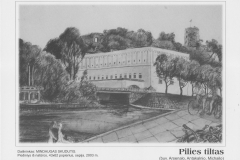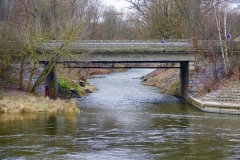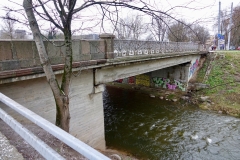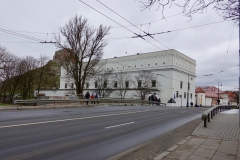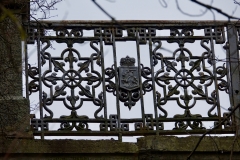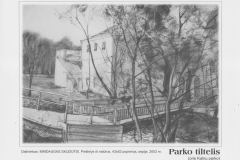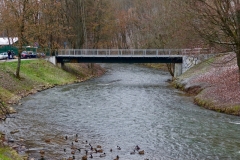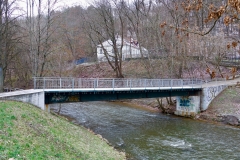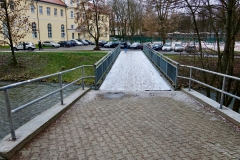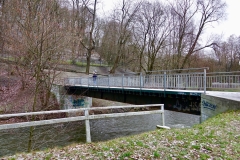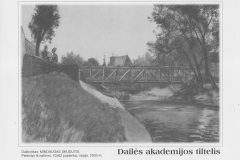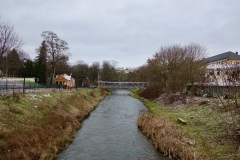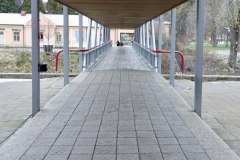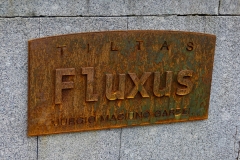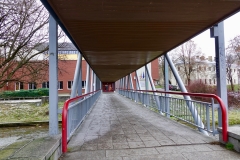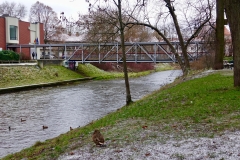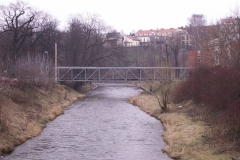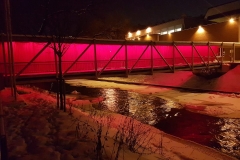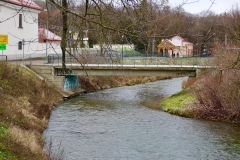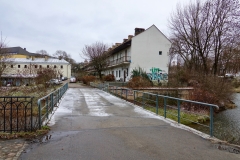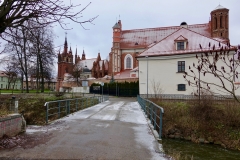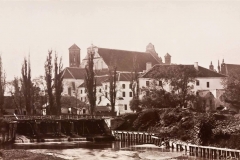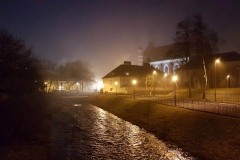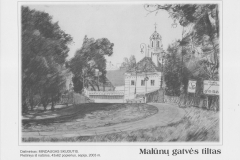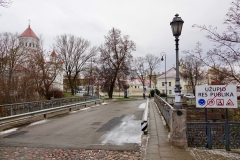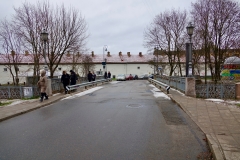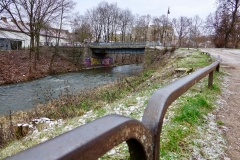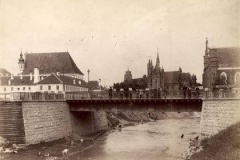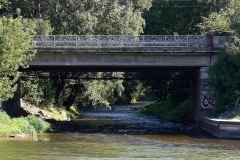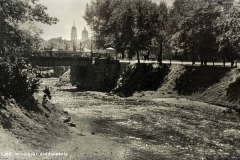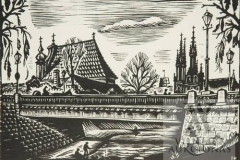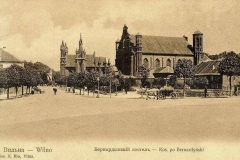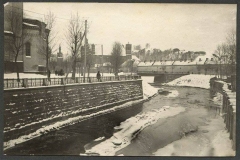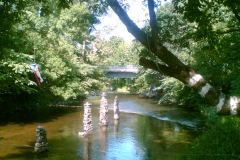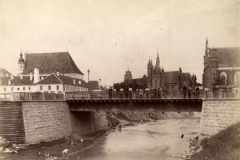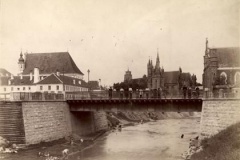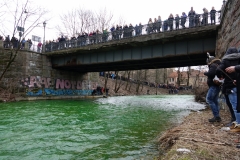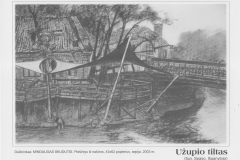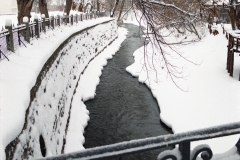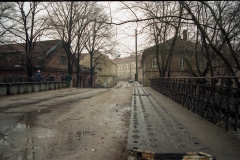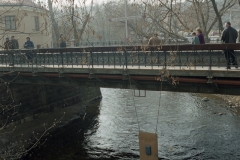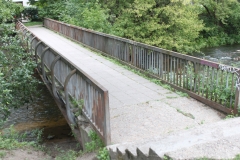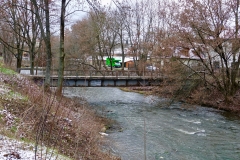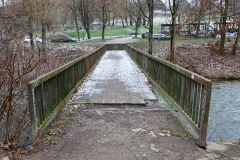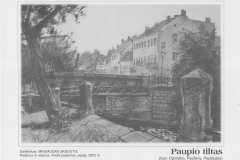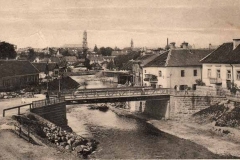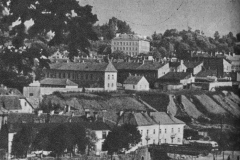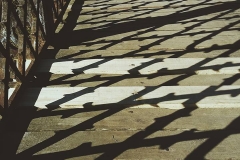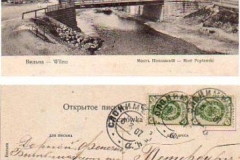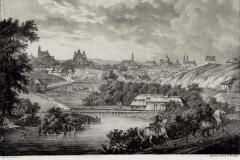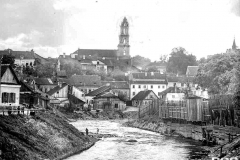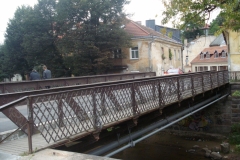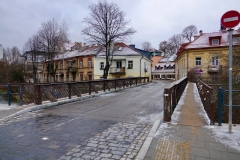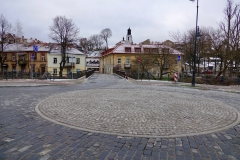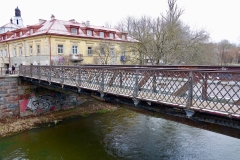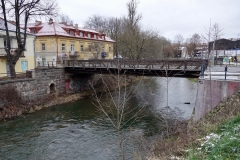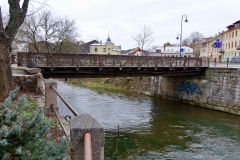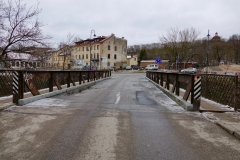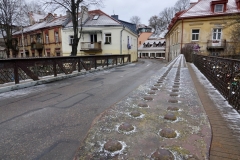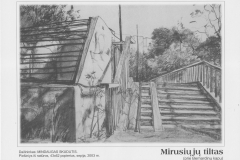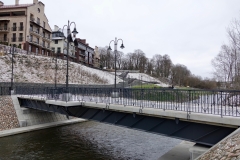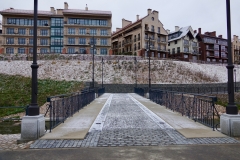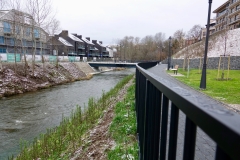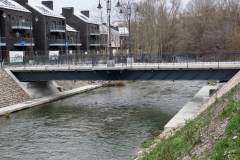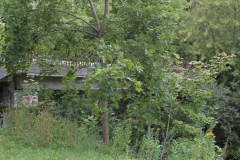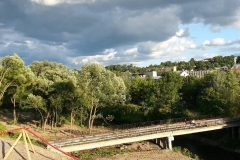BRIDGES OF UŽUPIS


Built in the end of 18th century and called the Artillery Bridge, but ruined by the flood in 1800 . A wooden bridge built later known as the ‘Mikhail Bridge’. However in 1855 it was already in emergency condition. The current bridge named after Castle was built in 1893. (architect Julian Janushevsky), and reconstructed (expanded) in 1964.
Bridge Railings 1892 were decorated with Vytis, coat of arms of Lithuania and the Crown – symbol of Tsar rule. In 1964 the handrail was removed and in 1992 casted anew with the signs of Vytis, which were destroyed in Soviet times.
The bridge reaches 7.7 m in height, 34 m in length and 20 m in width.
At the turn of the Vilnelė riverbed, the river was once crossed by the building of women’s convent of St. Bernard’s of the Convent of the Immaculate Conception of the Virgin Mary, with its arches leading to St. Church of St. Francis of Assisi. When the building collapsed in 1839 another bridge was built next to former building, the author of project – lieutenant Dilobil of Russian imperial army. During the construction of the building of the former Art Institute in Soviet times, the present bridge was built to bring in building materials and stays nameless.
Built in the 19th century near the Royal Mill. This is the bridge over Vilnia river built at the end of 19th century connecting Malūnų and Maironio streets. The length of the bridge – 18 m. Since the 16th century wooden bridges built were called Bernardine bridges. In 1838 a new wooden bridge was built on brick supports and 32 years later in 1866 was officially named after the Empress Catherine, but this name did stay for long. At the end of the 19th century bridge was officially called Alexander Bridge. In 1877, the city council announced a bid for the construction of two metal bridges across Vilnia, including this one. The metal bridge was completed around 1880. About 1956 the bridge was reconstructed. On April 1 of each year, the border crossing point (BCP) for the pedestrians and passengers of the Republic of Užupis is being established and is called Malūnų Bridge BCP.
The bridge was allowed to be built here by the privilege of King Sigismund in 1538, connecting the Polotsk road, then the main road to the East, towards Moscow. On 1795 in one of the last battles of the army of Grand Duchy of Lithuania, along with Vilnius and Užupean rebels with the army of the Russian Empire attacking the capital, took place in here . The efforts of the Užupeans to save Vilnius were immortalized in J.Marcinkevičius’ drama “The Cathedral”. The current bridge was built in 1901 under the project of the engineer V.Malinovsky, survived a series of wars and battles at his approach. The length of the Užupis Bridge is 19.9 meters and the width is 9.68 meters. On April 1 of each year, the border crossing point (BCP) for the pedestrians and passengers of the Republic of Užupis is being established and is called “Užupio Bridge”.
Built in Soviet times, when it became necessary to lay a thermal route across the river. Currently dismantled. Just below the riverbed, a new bridge was built in 2018, with MG Baltics and MG Valda (Darnu group) and the Administration of Vilnius City Municipality jointly absorbing EU and other funds. In 2019 the bridge was opened for use.

